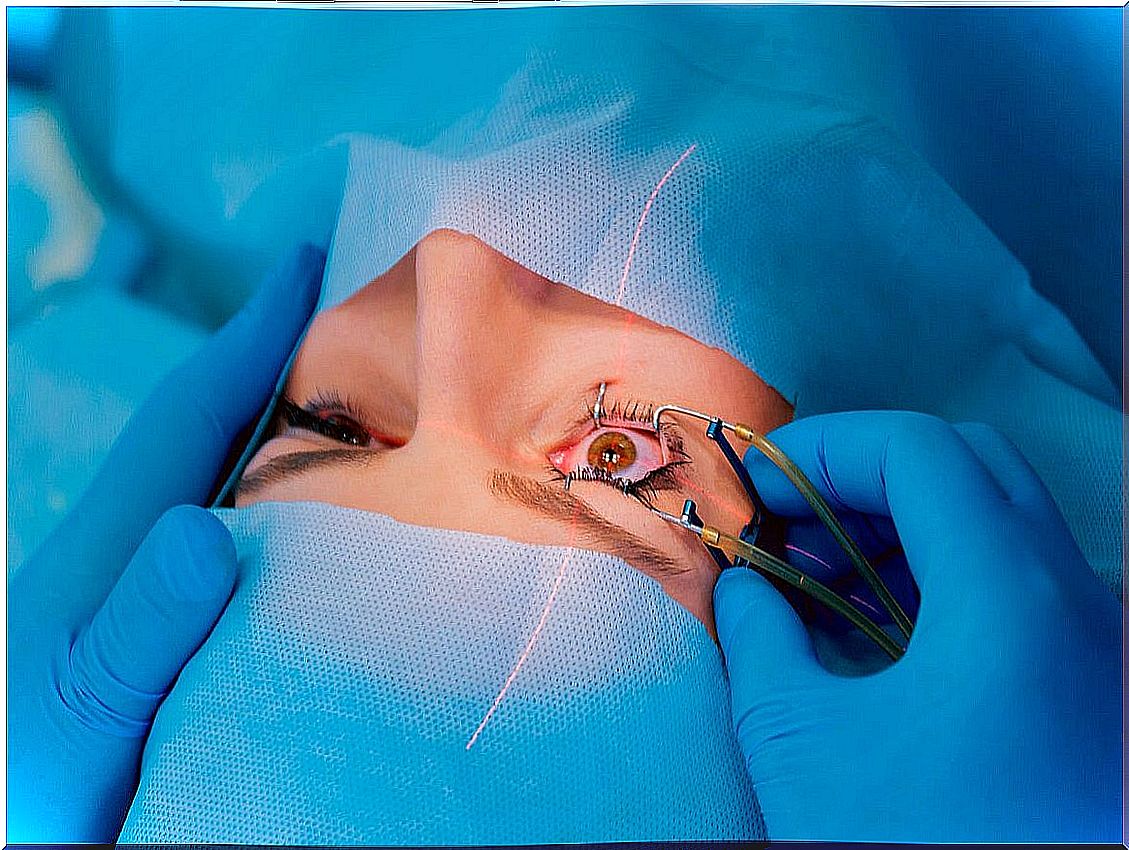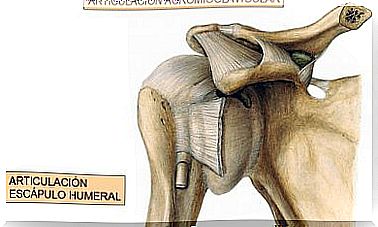Types Of Astigmatism And Their Treatments
There are three types of astigmatism: myopic, hyperopic and mixed. Today there are treatments for all of them, ranging from the use of glasses to corrective surgery or the implantation of lenses in the eyes.

There are several types of astigmatism, but they all have one abnormality in common. This is that the cornea, which is the transparent layer of the eye, does not have a regular curvature. In this way, the light that enters the eye is focused on more than one point on the retina and this causes blurry and distorted vision.
In most cases, astigmatism is inherited, but it can also be caused by injuries to the cornea from a blow or surgery to the eyes, or from eye diseases. Sometimes this disease appears associated with other deficiencies and this gives rise to the different types of astigmatism.
Myopic astigmatism
Myopic astigmatism is one that is combined with myopia. It is the most common of all types and occurs frequently in the population.
The main sign that someone suffers from myopic astigmatism is that the perception of straight lines, both horizontal and vertical, becomes blurry and diffuse, both at short and long distances. For obvious reasons, the more severe it is, the more obvious the difficulty becomes.
Likewise, it is common for other symptoms to appear when this problem exists, such as the following:
- Loss of visual acuity.
- Photophobia: sensitivity to light.
- Night glare.
- Tiredness: eye fatigue.
- Sudden dizziness and headaches.
- Burning sensation.
We speak of simple myopic astigmatism when one of the two main meridians of the eye focuses the light rays in front of the retina; meanwhile, the other meridian makes a correct approach. If both meridians fail, it is called compound myopic astigmatism .

Hyperopic astigmatism
The second type of astigmatism is hyperopic and, as in the previous case, it receives this name because two anomalies are present: astigmatism and hyperopia.
Remember that hyperopia is an irregularity of vision due to which there is blurring, both at long and short distances. In turn, people who suffer from it have difficulty capturing the details of objects at all distances. Hyperopic astigmatism causes the following symptoms:
- Blurred vision: regardless of distance, with eyestrain.
- Pain in the eyes and headache: which can be severe and persistent if not treated in time.
- Elongated or distorted vision of objects.
- Strabismus: this is the deviation of the axis of the eyeballs, which can be common among children with the pathology.
This is another type of astigmatism in which there are two modalities. In simplex, one axis of the eye focuses on the retina and the other behind it. In the compound mode, the two axes of the eye focus behind the retinal tissue.
Mixed astigmatism
The third of the types of astigmatism is mixed. It occurs when one meridian of the eye focuses in front of the retina, while the other does so behind it. Sometimes it happens in isolation and other times it is a combination of myopic and hyperopic.
This modality is, in almost all cases, congenital or genetic. However, it can also be caused by trauma, eye diseases such as keratoconus, or surgical complications. The main symptoms of this problem are the following:
- Blurred vision or distortion of objects at any distance.
- Light distortions: halos, tails or flashes.
- Irritation to the eyes.
- Headache: from fatigue or visual fatigue.
It is common for people with this abnormality to tilt their head or squint to see better. In some cases, images are sharp on one meridian and blurred on the other.

Treatments for types of astigmatism
Generally speaking, the different types of astigmatism can be treated with the use of glasses, contact lenses, or contact lenses. Also with surgery. In the case of the myopic or hyperopic variant, the most common is to use toric lenses. These have a spherical and a cylindrical surface.
However, these types of lenses usually give great problems to those who use them, because sometimes it is very difficult for them to remain fixed, without moving. In both cases, you can also use glasses with toric lenses.
In the mixed modality, and in some cases of the other two types of astigmatism, the use of gas permeable contact lenses may also be prescribed. These are rigid lenses that act by shaping the cornea so that the axes focus on the retina.
For all types of astigmatism there is also the option of having surgery. There are several modalities, such as Lasik, PRK or FemtoLasik. Likewise, there is the possibility of implanting a personalized intraocular lens for those patients who, for one reason or another, are not candidates for the other interventions.









